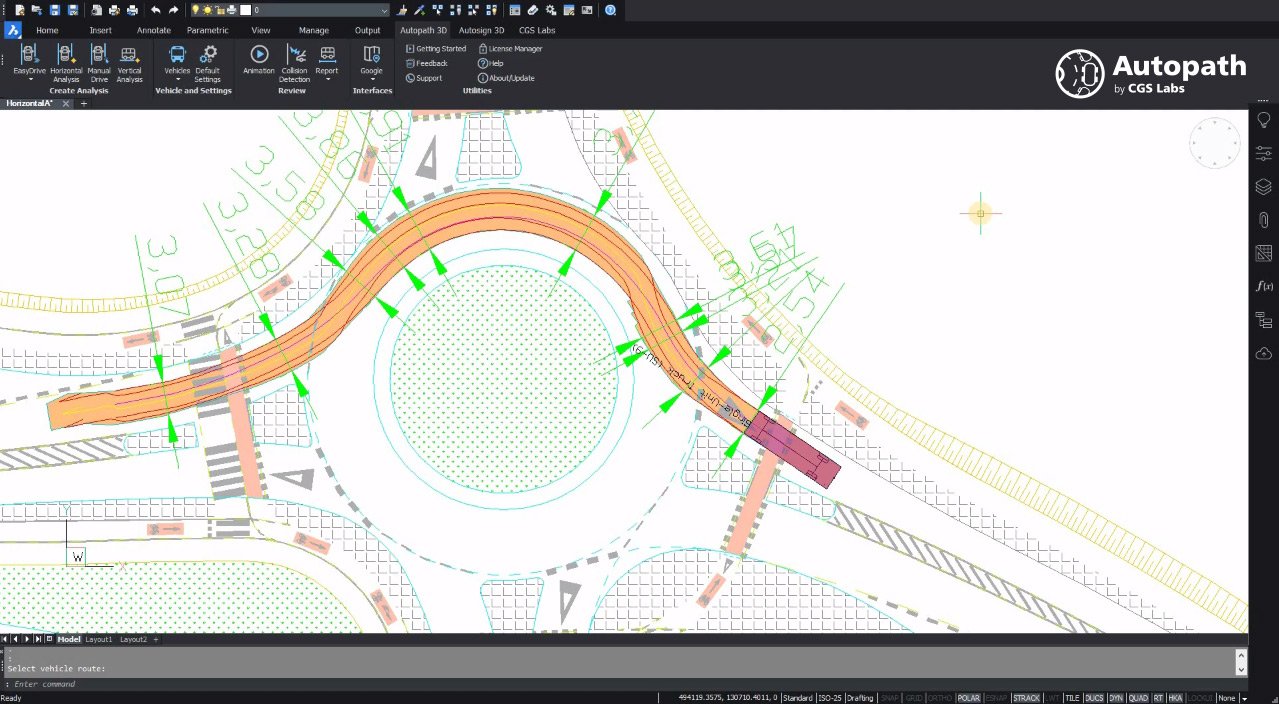Swept Path Analysis is the calculation and analysis of the movement and path of different parts of a vehicle when that vehicle is undertaking a turning maneuver. At a basic level, this includes calculating the path taken by each wheel during the turn and also calculating the space needed by the vehicle body during the turn.
The theory behind Swept Path Analysis is based on Ackermann steering geometry. Ackerman’s principle is a geometric arrangement of linkages in the steering of a car or other vehicle designed to solve the problem of wheels on the inside and outside of a turn needing to trace out circles of different radius. It was invented by the German carriage builder Georg Lankensperger in Munich in 1817, then patented by his agent in England, Rudolph Ackermann (1764–1834) in 1818 for horse-drawn carriages.
Once made by hand, nowadays performed with software, Swept Path Analysis has an important role in the design process for new or modified path layouts.
Swept Path Analysis is utilized to aid the design of both residential and industrial road layouts. Existing sites may require new or updated road layouts where the volume, speed, and flow of the existing traffic using the site needs to be accommodated.
In highway planning, it is used to assess what kinds of vehicles can safely navigate a particular design, and/or what kind of design can accommodate those vehicle movements.
Whether it be testing parking arrangements, loading areas, emergency access, or construction routes, swept path analysis enables a calculation of the number and/or types of vehicles your site can logistically and safely accommodate.
Swept Path Analysis benefits engineers, urban planners, architects, developers, special transportation professionals, site owners and many other as it provides them with the means to assess the turning implications of a wide variety of vehicle types on design layouts at a very early stage in the design process without the need of physically driving or undertaking the maneuvers. This helps inform the design process and provides a fast and cost-efficient method of assessing alternative layouts and sites.

You can see a very understandable and simple explanation of the Ackermann steering theory in video made by Jonathan Sprinkle, here.


